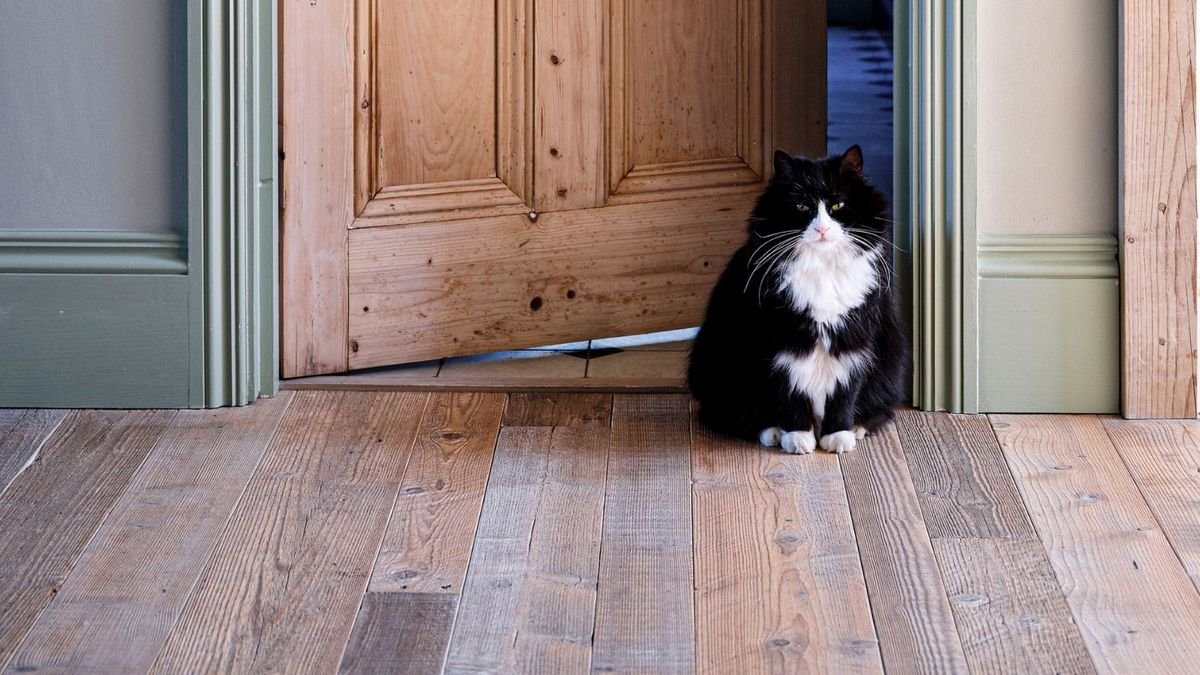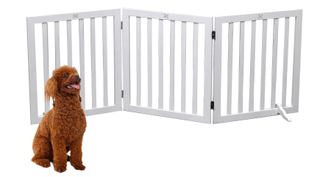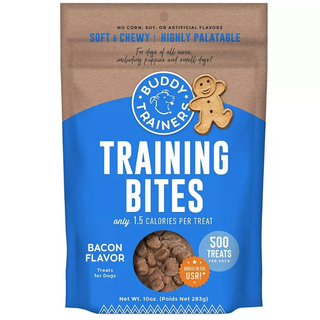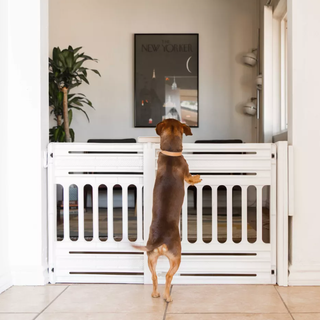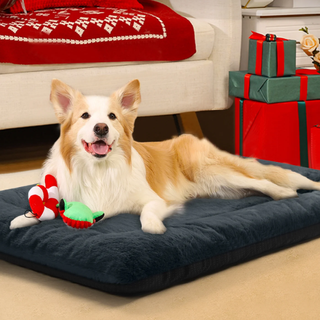Feeling the fresh summer air flow in through your windows and the heat from your home dissipating out the door is soothing, both to keep your interiors fresh and to keep your pets cool in a heatwave. But what isn’t soothing is when your pets decide an open door is their cue to make a run for it.
Most of us would feel at great ease if we could just have our doors open and not have to even think twice, although at the moment that reality may seem like a dream.
Today’s your lucky day because doing exactly that is possible – you don’t have to sit with your dog every time your front door is open to monitor whether they’re about to bolt. We spoke to experts to discover different ways to stop your pets from making an escape through your home’s open doors. Here’s what they had to say.
Why do my pets want to run out the door?
There are many reasons why your pet might feel tempted to run outside when the door is open, and most of them are signs of a healthy, energetic animal! This energy could just benefit from being better maintained.
‘An open door might reveal the chirping of birds, the rustle of leaves, or the scent of other animals,’ say Mike and Sarah Curtin, Owners of My Dog Listens LLC. ‘These are signs of curiosity and exploration – warmer weather brings with it new scents, sounds, and sights that can be highly exciting for pets!’
How can I stop my pet from running out of my home’s open doors?
1. Ensure adequate exercise and stimulation during the day
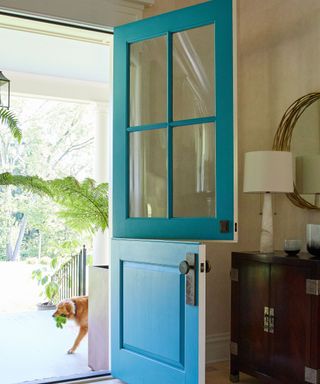
(Image credit: Betsy Wentz Interior Design/Carmel Brantley)
If you bring your pet outside during the day and introduce them to the sounds, sights and smells of the summer on your own terms, they are less likely to run out to explore by themselves. Approaching the issue this way is a win-win as your pet still gets the fun of exploring but you don’t have to stress about them getting lost or suddenly disappearing from your home.
‘Ensuring that your pet receives ample physical and mental stimulation will make them feel more content and relaxed,’ say Mike and Sarah. ‘Regular walks, playtime, and interactive toys can reduce their desire to seek entertainment outside on their own.’
2. Invest in a pet gate
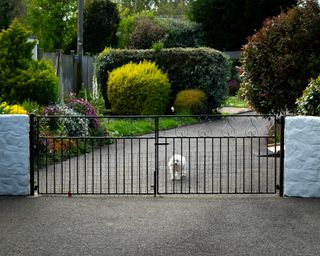
(Image credit: Ben Grayland)
If you’re looking for a quick-fix solution to your pet problem, and a dog gift that will make life easier for both yourself and your pup, it might be worth investing in a pet gate. Similar to how a baby gate works, pet gates serve as a barrier to physically stand in between your pet and the open door. This helps to keep them out of harm’s way and to instantly clear your mind of worry.
‘Pet barriers provide a simple yet effective way to prevent pets from accessing exits,’ say Mike and Sarah. ‘They can be especially useful during high-traffic times when doors are more likely to be open.’
Coming in a multitude of styles, from monochrome models to concertina wooden makes, you’ve definitely got options. At my house, we use a wooden barrier that looks like an outdoor trellis! Bringing the outdoors indoors in this way helps to make the gate stand out less against the rest of my home, as whatever barrier you use will be seen by people outside.
The most important factor to consider if you’re thinking about getting a pet gate, though, is how heavy-duty you need it to be. My family’s chihuahua-poodle cross has never knocked over our stand-up, lightweight barrier, but if you have a larger dog it might be worth looking into taller, more sturdy gates that can be attached to your wall by hinges.
3. Lean on positive reinforcement
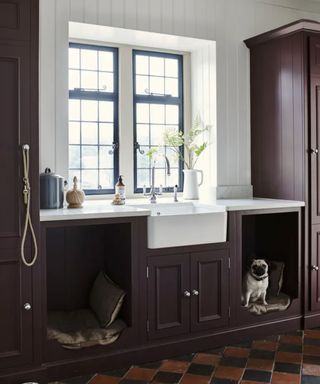
(Image credit: Neptune)
Many pets (not just dogs) will benefit from simple, consistent positive reinforcement. Making it clear to your furry friends that leaping towards the door as soon as it opens is not one of the rules of pet etiquette will soon teach them right from wrong. You could also lay out a cozy blanket or place a pet bed in a different room but in sight of the door, showing them that they can see the door and what’s going on outside but from their designated, comfy spot.
‘Rewarding your pet for staying calm and not attempting to escape goes a long way,’ say Mike and Sarah. ‘You can use treats, toys and affection to reinforce good behavior, making your pet more likely to repeat those good actions in the future.’
4. Consider trying an invisible fence collar

(Image credit: Getty Images/Catherine Ledner)
Invisible fence collars are a divider but can work really well for some people and their pets. The ‘invisible fence’ is a collar that beeps or emits a small quick vibration motion when your pet attempts to go into an area outside of the collar’s allocated ‘yes zone’. It’s somewhat of a GPS for your dog – many even include a tracker so you can see where your dog is going, making the item one of many dog theft prevention tips that will keep your pet safe.
If you notice signs of stress from your dog during or after use, or if your dog continues to break through the invisible fence despite setting off the sensor, this may not be the best option for you.
5. Effectively manage your environment
Until other methods of training kick in, or you have a barrier installed, doing what you can to manage your home environment is a must. The open door is clearly something triggering to your pet, in either a positive or negative way, so developing a routine to go through with them when that door opens can help cultivate a calm atmosphere at home.
‘Managing the environment is an effective solution because you can put it into place immediately without having to train a behavior,’ says Heidi Meinzer, Professional Dog Trainer and Chairman of The Association of Professional Dog Trainers (APDT). ‘Think, for instance, of a dog who chews shoes – making sure your shoes are put away is an easy solution! In the meantime, you can work on training your dog to go to their dog bed or to another place a safe distance from the door at certain times, such as when the doorbell rings, when someone knocks, or when you open the front door of your house.’

